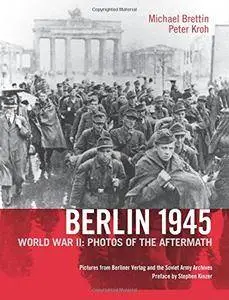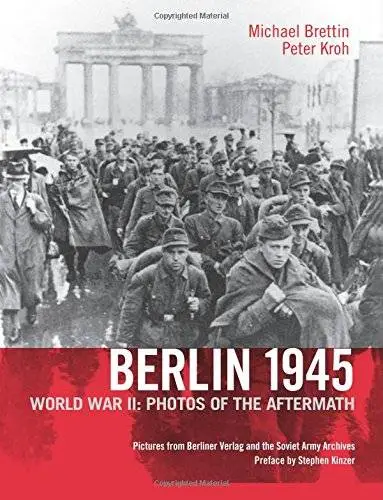Michael Brettin, Peter Kroh, "Berlin 1945: World War II: Photos of the Aftermath"
English | ISBN: 1935902032, 3960260148 | 2014 | EPUB | 220 pages | 19 MB
English | ISBN: 1935902032, 3960260148 | 2014 | EPUB | 220 pages | 19 MB
Berlin, in May 1945: World War II is over in Europe. The Soviet army has conquered Berlin, a city reduced to rubble, and now under martial law, imposed by the victorious Communists. Soldiers from America, Great Britain, and France will move into Berlin a few months later. But now, broken tanks and makeshift barricades are littering the streets, tenements and churches are turned into bombed-out shells, tunnels are flooded and train tracks destroyed. German soldiers are been hauled off to POW-camps in Siberia, while old men are cutting up dead horses for food, women are trading clothing for survival, and children are left to their own devices in the ruins. And the victors, Russian soldiers of the Red Army, look as much exhausted as the defeated. These rare pictures have been taken by photographers of the Soviet Army and by Germans in their employ, among them Otto Donath, immediately after the surrender and in the months to follow. They are published for the first time in the United States, allowing a glimpse into an era of destruction and desperation, but also of survival and rebuilding. The text is by Michael Brettin, Ph.D., the photos were curated by Peter Kroh, both of them editors at Berliner Kurier. The preface was written by Stephen Kinzer, the former bureau chief of The New York Times in Berlin.
Dr. Michael Brettin, born 1964, studied History, Politics and Slavistics and graduated with a PhD in History from Hamburg University. He is also a graduate of the Hamburg School of Journalism, the Henri-Nannen-Schule. Currently, he works as a managing editor of the Sunday issue of Berliner Kurier.
Peter Kroh, born in 1950, has worked as a photo reporter for East German newspapers. In 1995, after the Wall had come down, he moved to Berlin to work for Berliner Kurier. Kroh became the photo editor of the paper. Today, he is retired.
Otto Donath worked as a photographer for the propaganda company of the Wehrmacht during WWII. After 1945, he took pictures first for the Soviet army, later for newspapers and magazines in East Berlin. He died in 1971 in Berlin.
Stephen Kinzer is an award-winning foreign correspondent who has covered more than 50 countries, mostly for the New York Times. Today, he is a visiting fellow at Brown University. His most recent book is "The Brothers: John Foster Dulles, Allen Dulles, and Their Secret World War."
These photos depict a grotesque normalcy, beyond the well known iconography of heroic liberations and optimistic rebuilding. -Der Spiegel Online
At times eerie and at times prosaic, the photographs, many taken by victorious Soviet Red Army soldiers, show ordinary people doing extraordinary things in order to rebuild their lives, literally and figuratively, amid the ruins of a defeated city. -Jason Walsh, correspondent, Christian Science Monitor
These never-seen pictures of Berlin in ruins are so forceful, because for those Berliners, destruction was an everyday experience. This view of history does not leave anybody untouched. untouched. -Literaturmarktinfo.de
A veritable gold mine of historical and, above all, photographical treasures, with something for everyone in this book, and everything in it, from death to birth, from joy to sadness, from optimism to resignation. -Luke McCallin, author of The Man from Berlin.
We see it all: the unfathomable rubble, the homeless and the hungry, the German soldiers marched off to prison camps. And then: the beginnings of recovery and return of the human spirit. Even if you think you've seen it all before on the European war, Berlin 1945 is likely to surprise you. -Greg Mitchell, The Nation magazine, and author of Hiroshima in America



